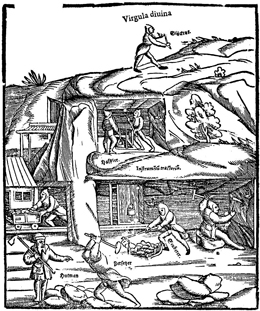Ermina
A cross disciplinary team, it was formed to study ancient mines and industrial heritage sites and to carry out archaeological research on them
The background to ERMINA :
Archival researchers, archaeologists, underground explorers, geologists, geomorphologists and historians, aware of the need to link the study of archaeological sites with their protection, combined to form a team in the late 1970s to study the iron mines of the Lorraine Iron District and the metal mines of the Warndt area (Lorraine, France). During the 1980s, the team extended its field investigations and underground exploration in Eastern France. The mines of Longeville-les-Saint-Avold (Moselle) were among the first to be preserved as an heritage site. Most of similar sites now well preserved have taken this example as a model of preservation.
A cross disciplinary scientific approach was adopted, which also integrates archival study, field investigation and laboratory research.
Activity has now been extended to other European countries, starting in the Alp region and European country, including Greece, Italy and the United Kingdom.
ERMINA today
The researchers from various disciplines who were working on these projects agreed to form a national association in 1997, creating ERMINA.
Since then ERMINA has united researchers interested in studying, exploring and preserving the archaeological heritage of the mining industry.
The association set itself three main goals :
– To develop the study and archaeological investigation of mining and industrial heritage sites;
– To contribute to the preservation of archaeological, geological and mineralogical sites;
– To edit and publish scientific and educational papers.
In order to achieve its objectives, ERMINA organises and coordinates: archaeological digs, field investigation and exploration of general mining and industrial heritage sites; expeditions abroad; scientific experiments including the techniques of ancient metallurgy; specialised courses in the field of mining and industrial archaeology, offer expertise, interpretive analysis and topographical descriptions.
The ERMINA website aims to disseminate archaeological, industrial, scientific and technological knowledge specific to mining and metallurgy. It offers a significant contribution to research and scientific communication concerning History of Science and Technology.


